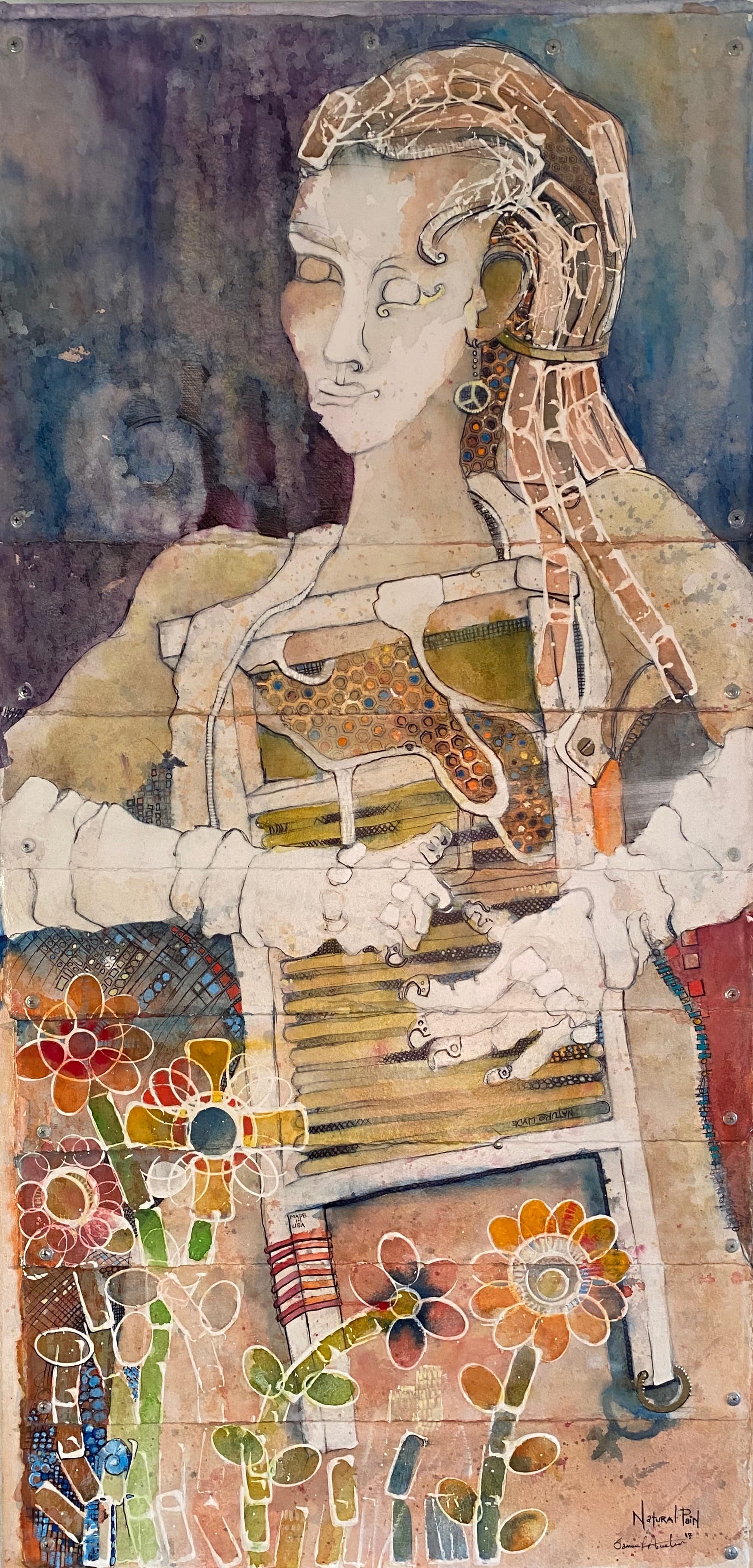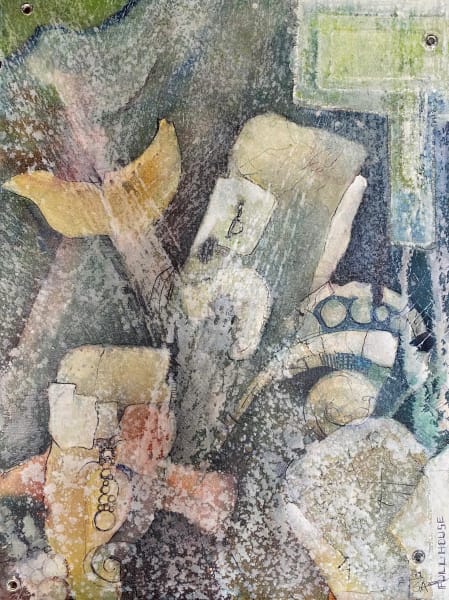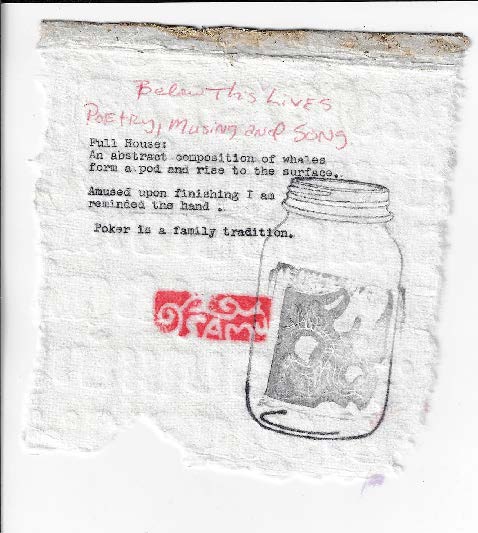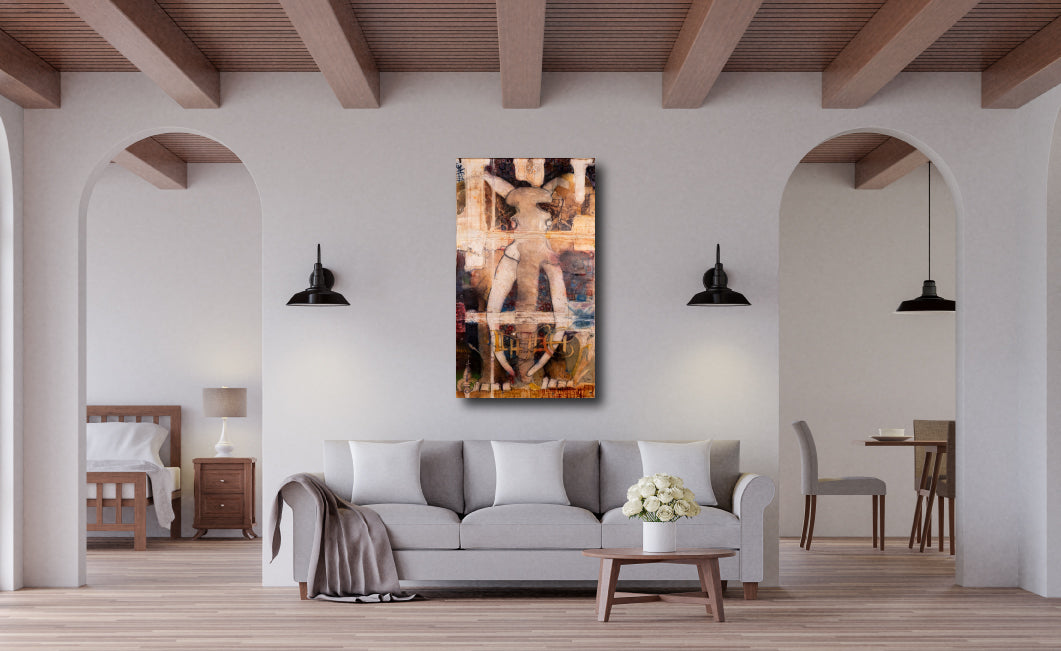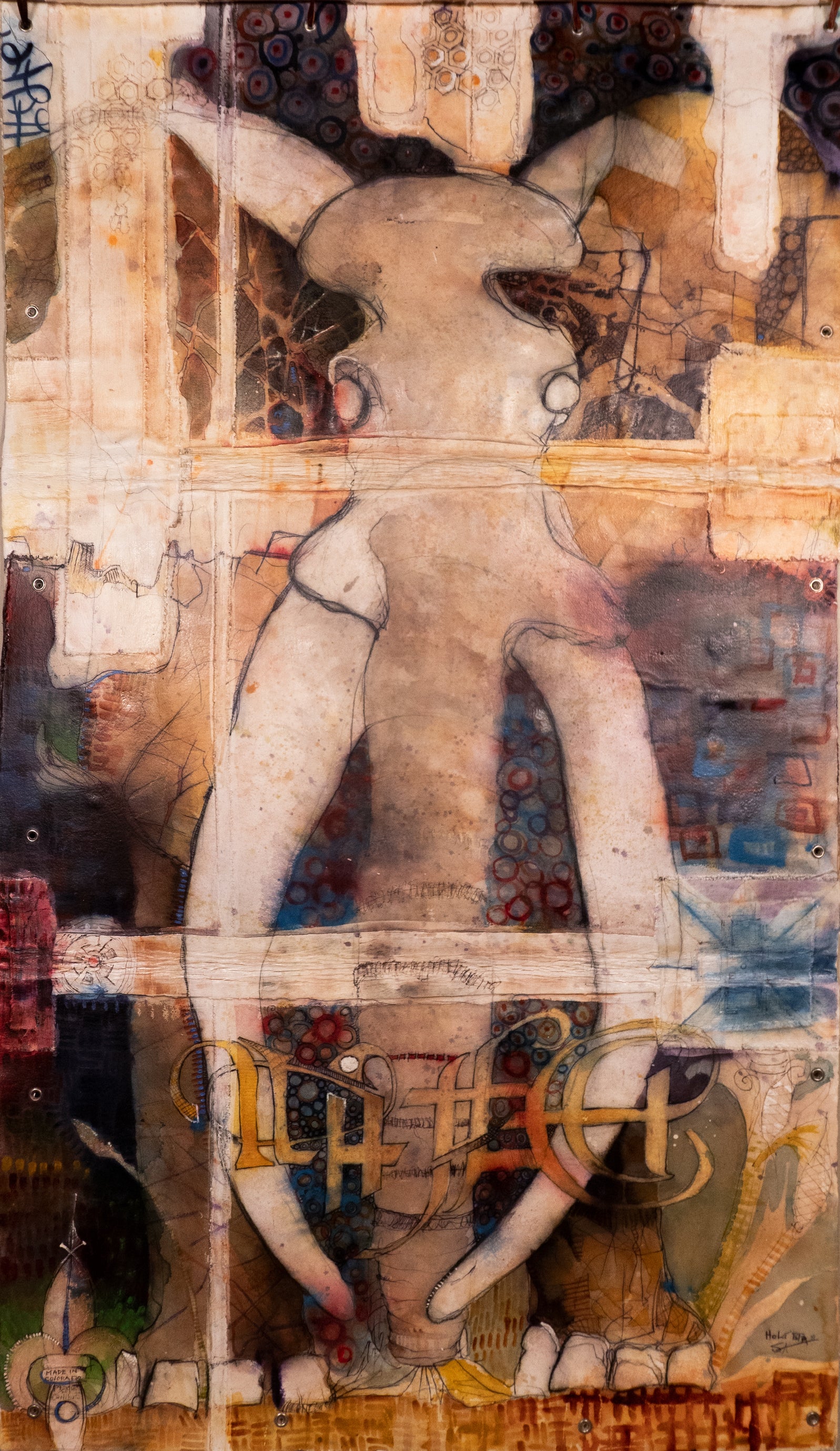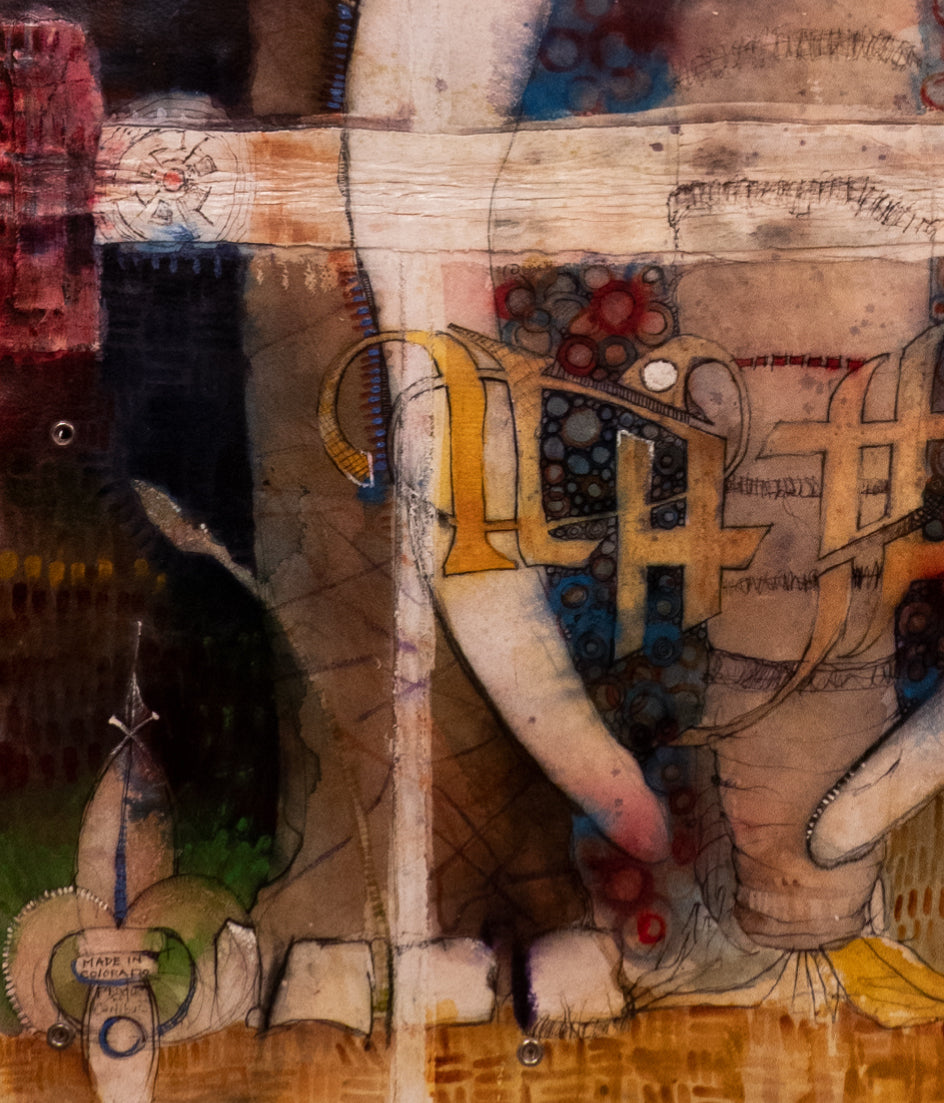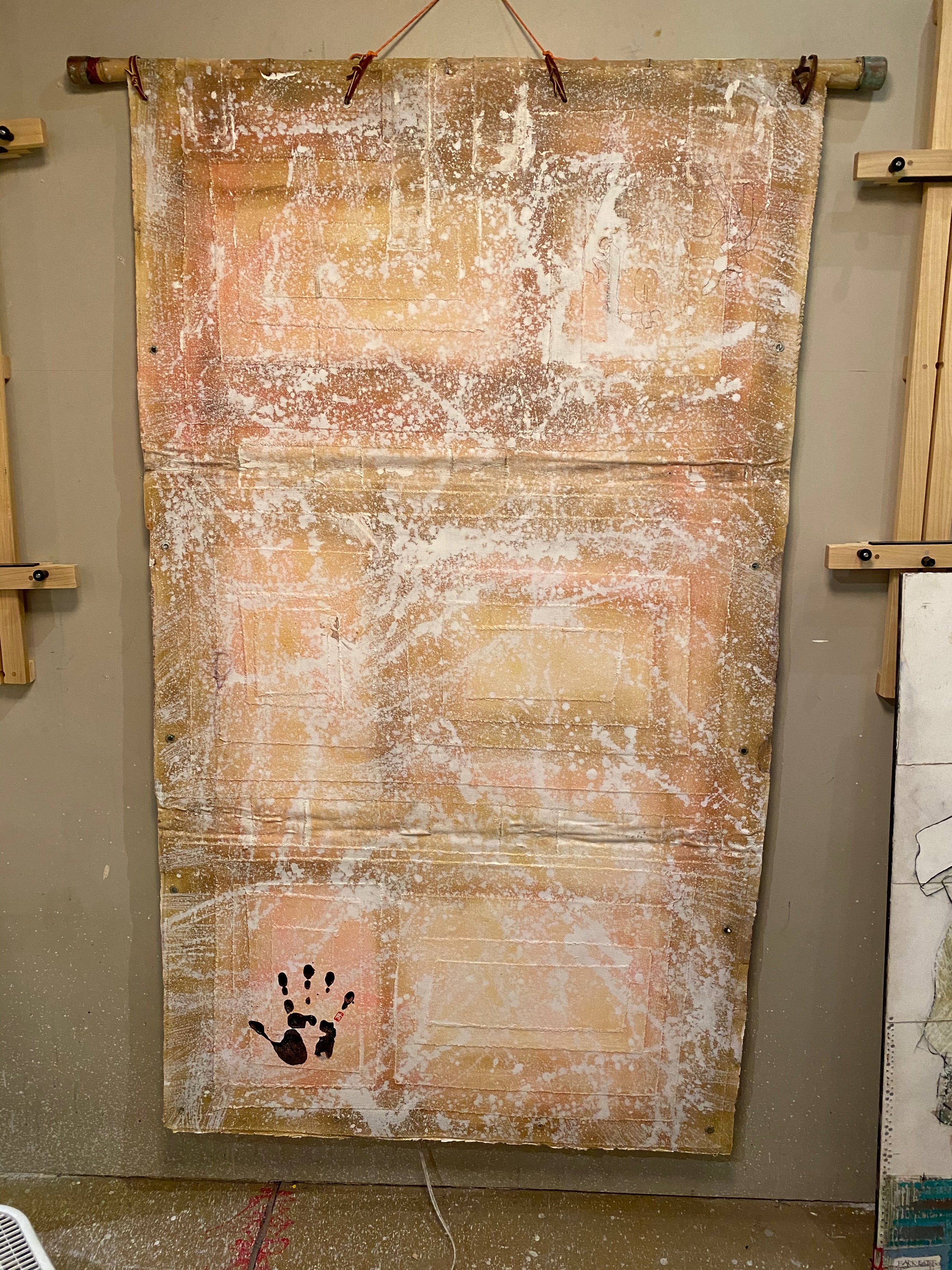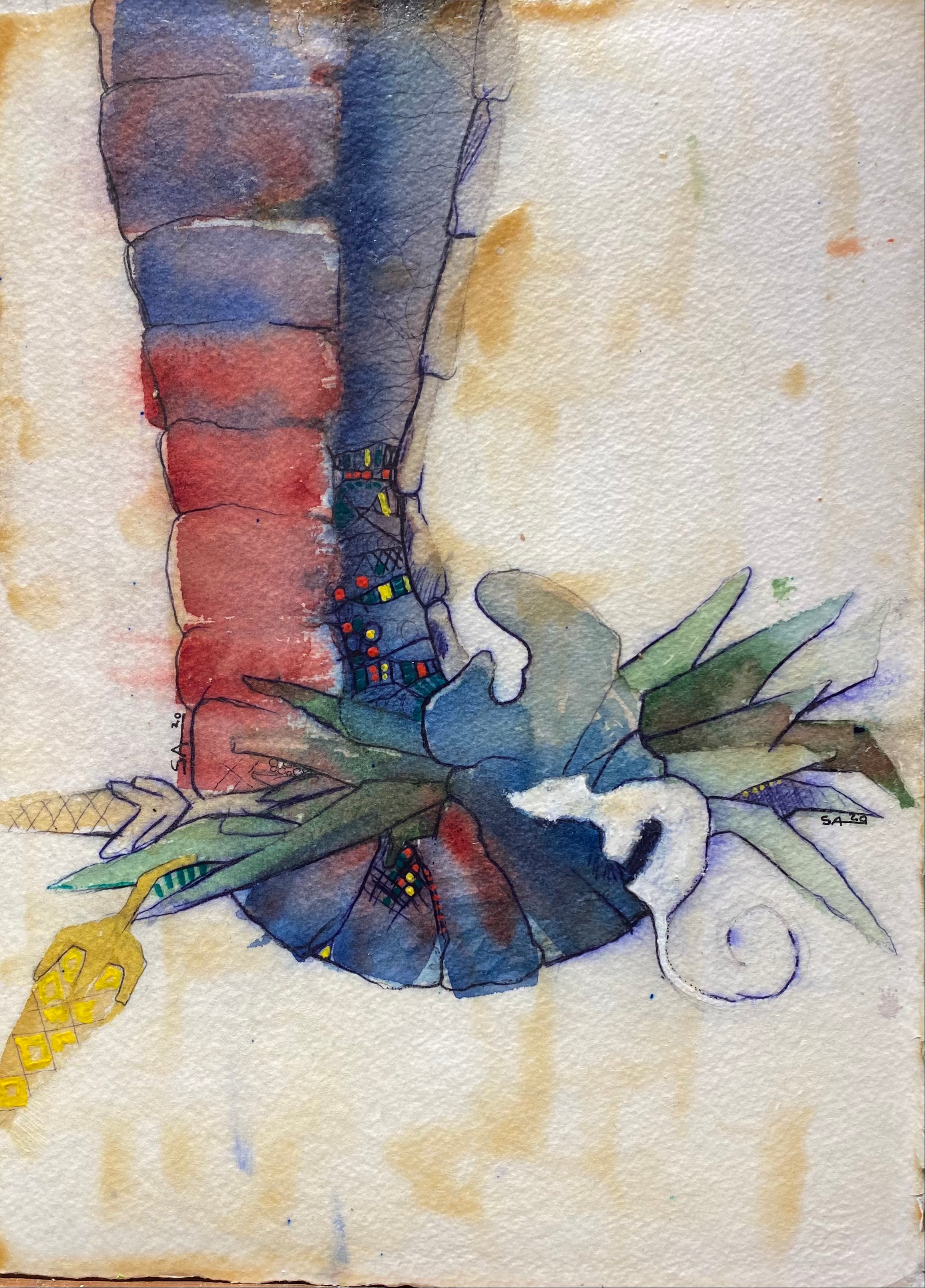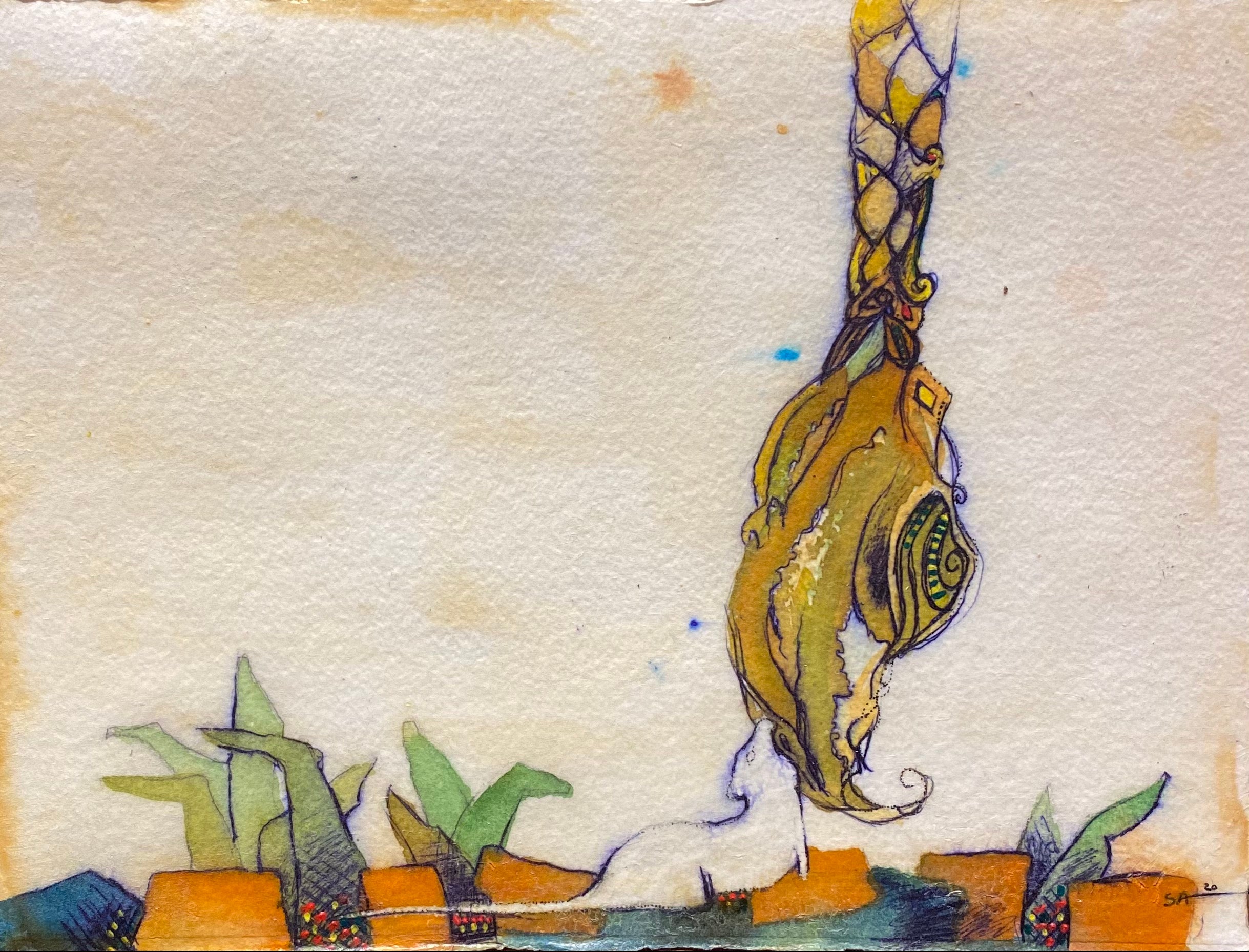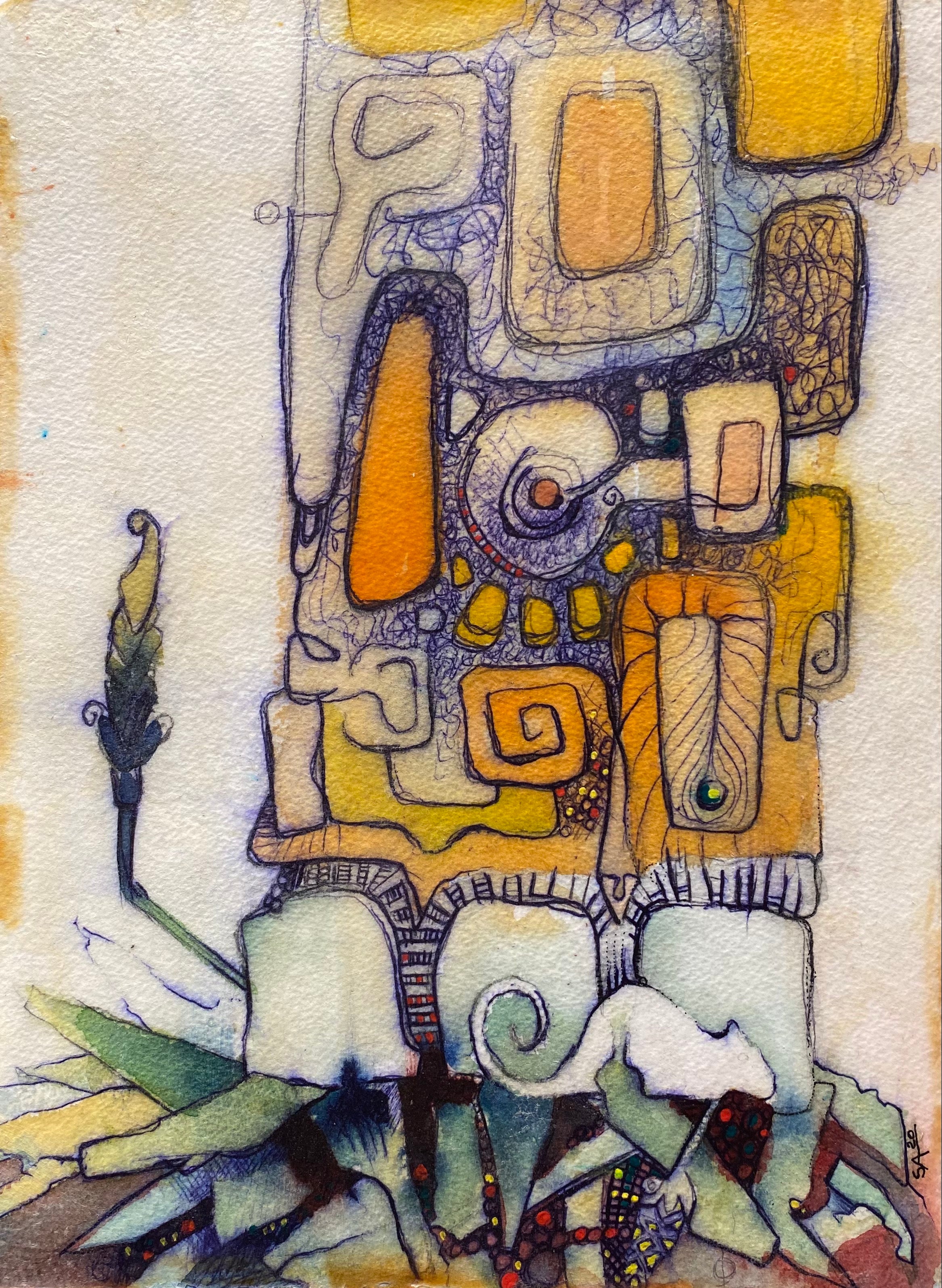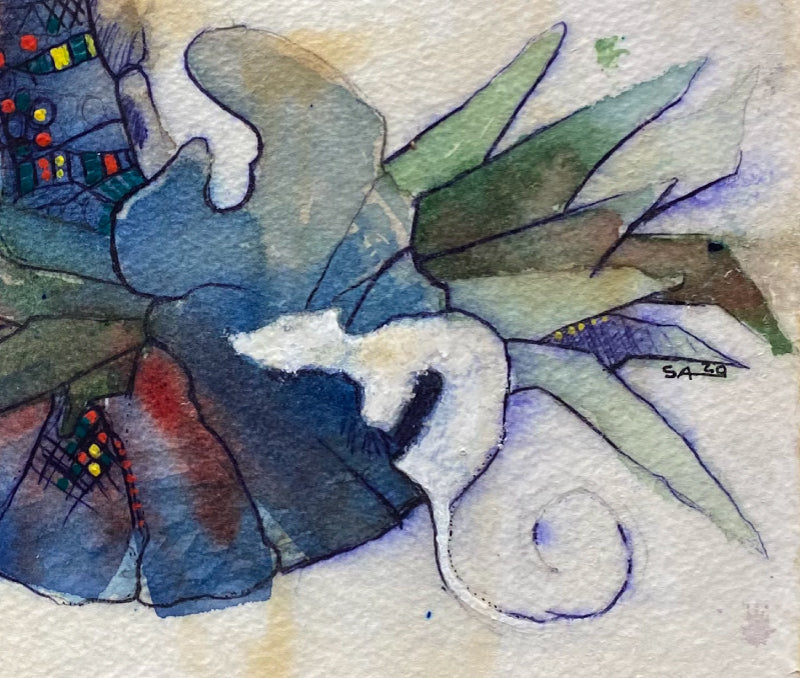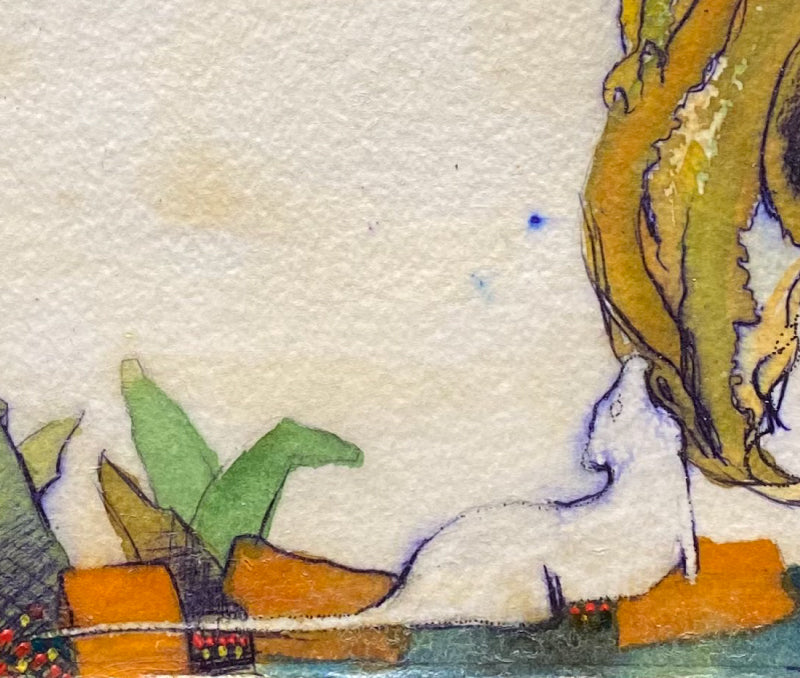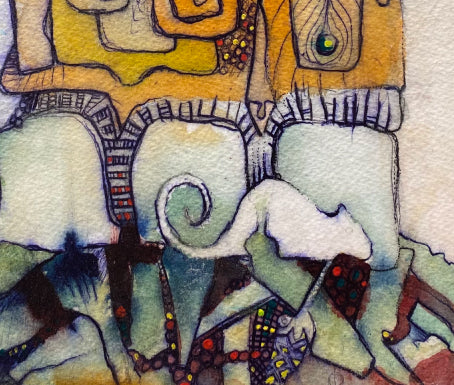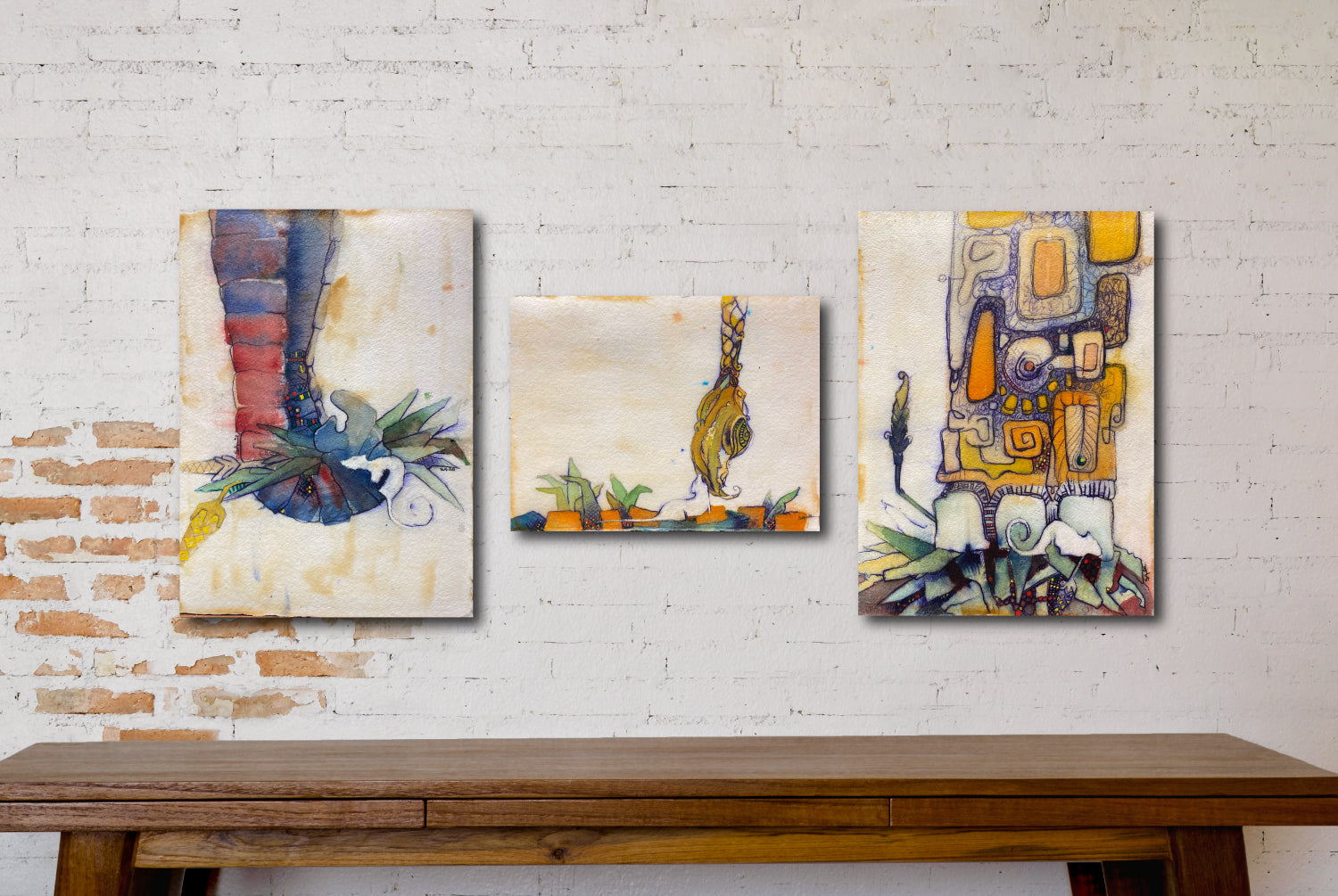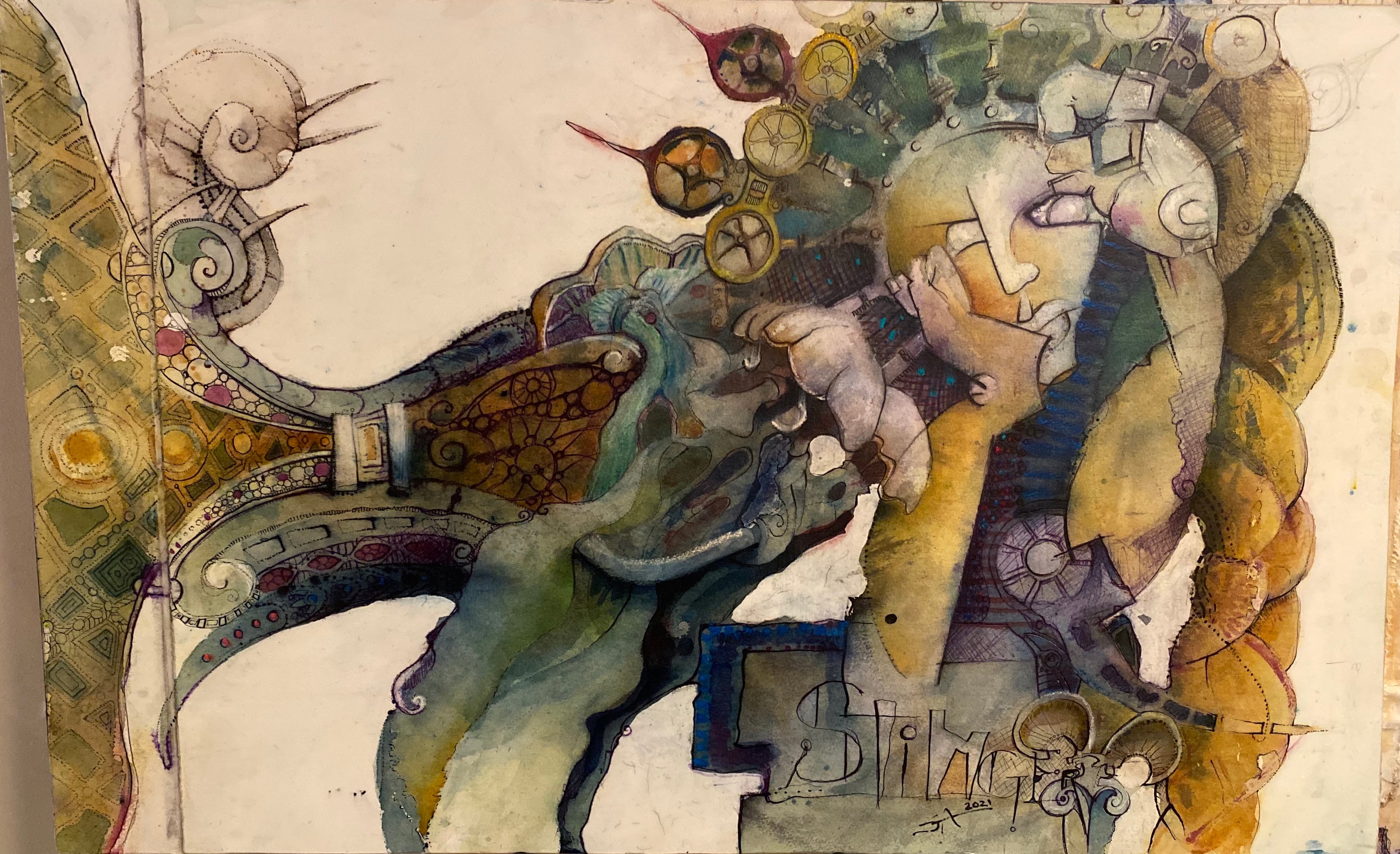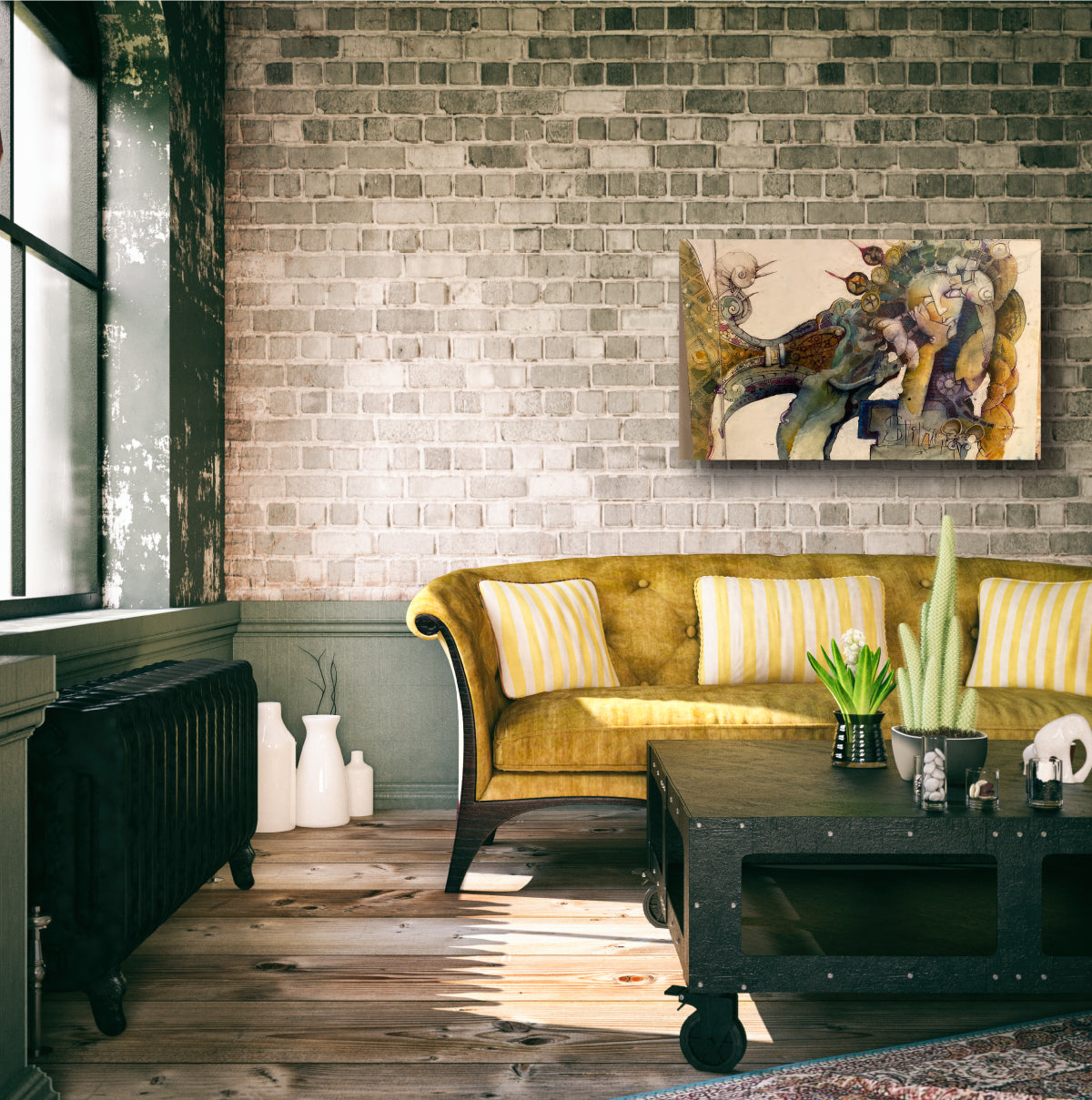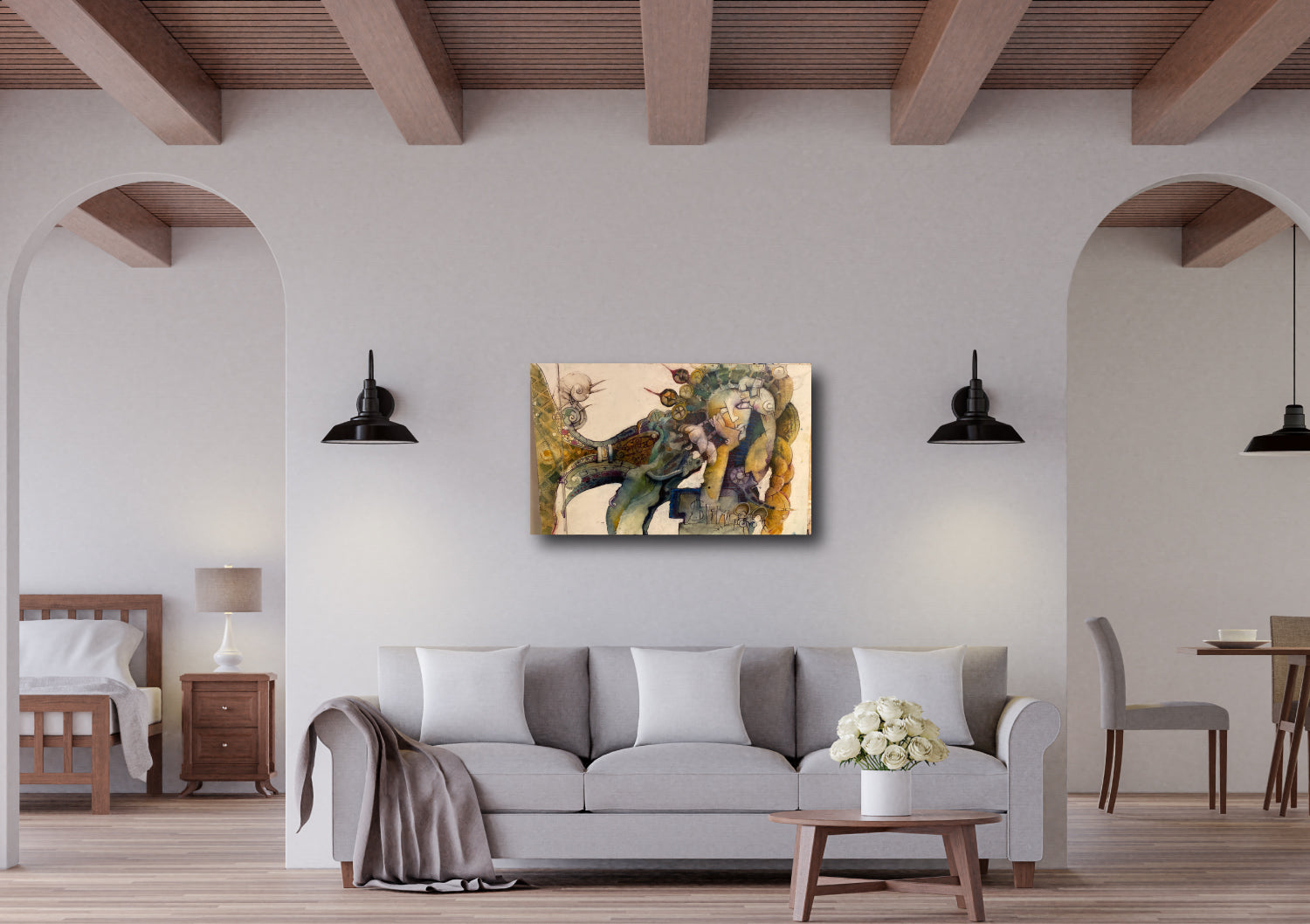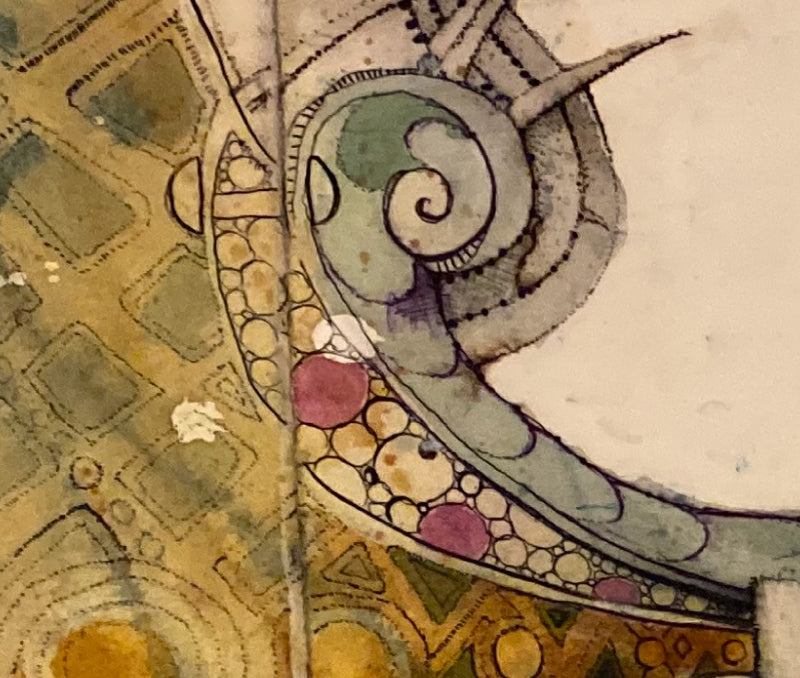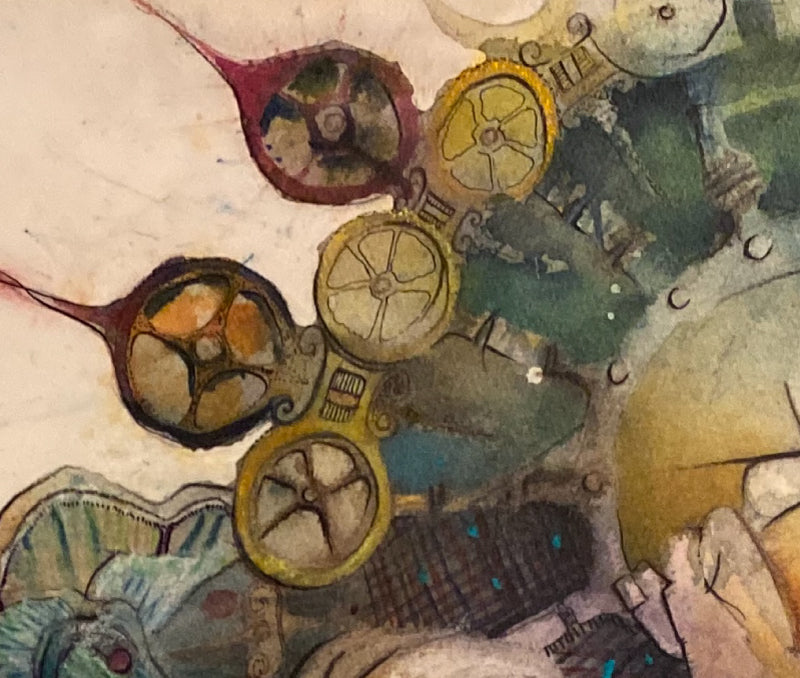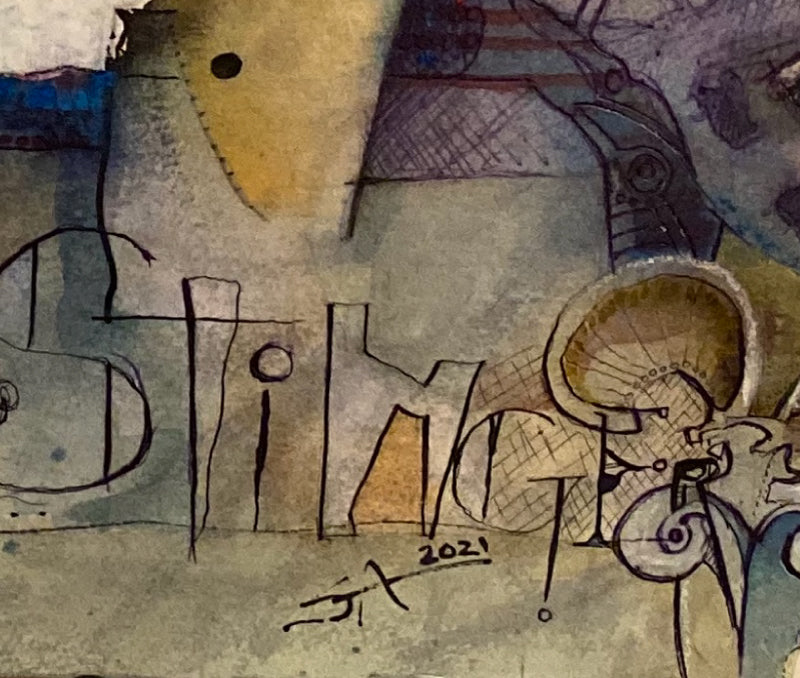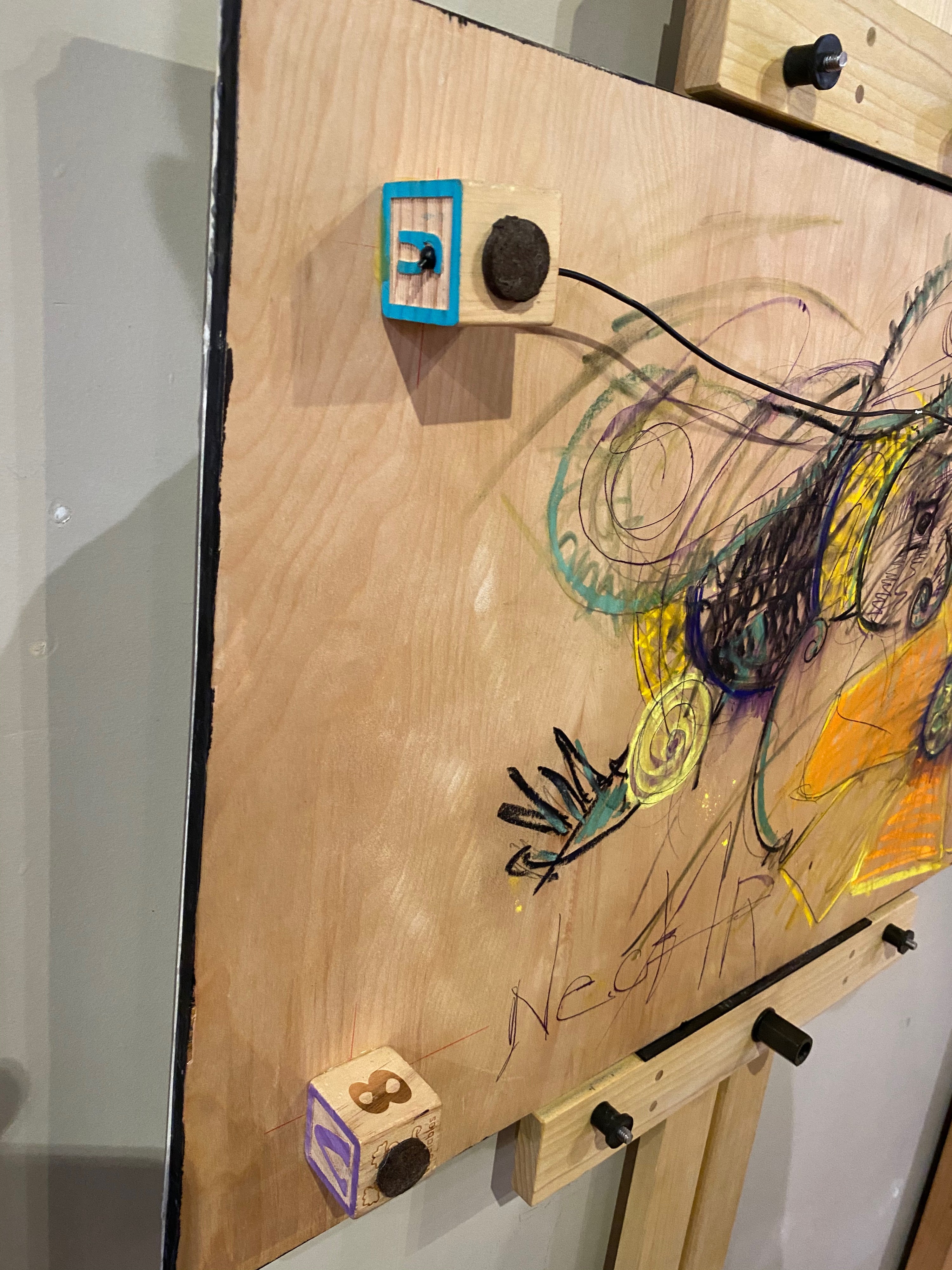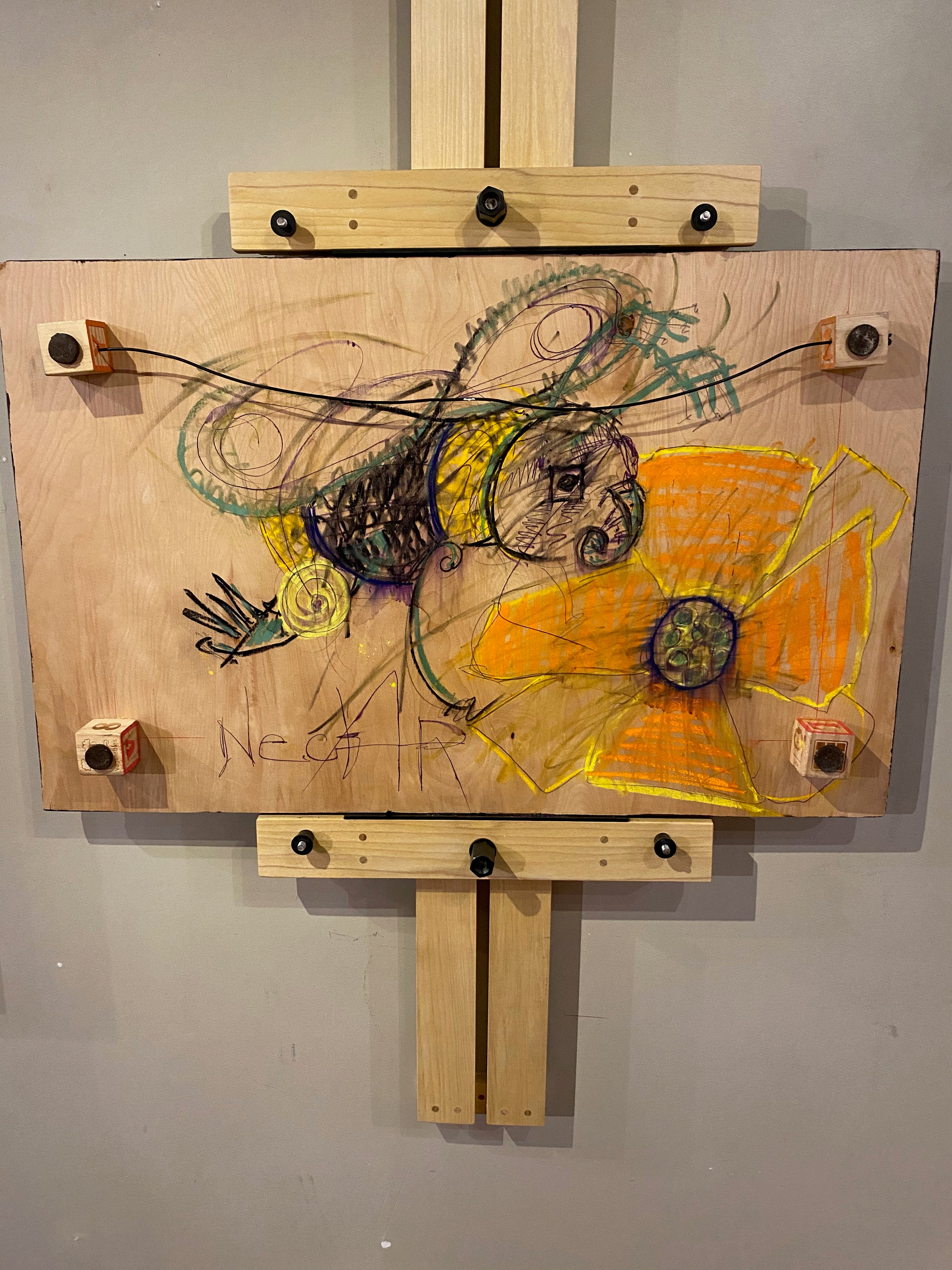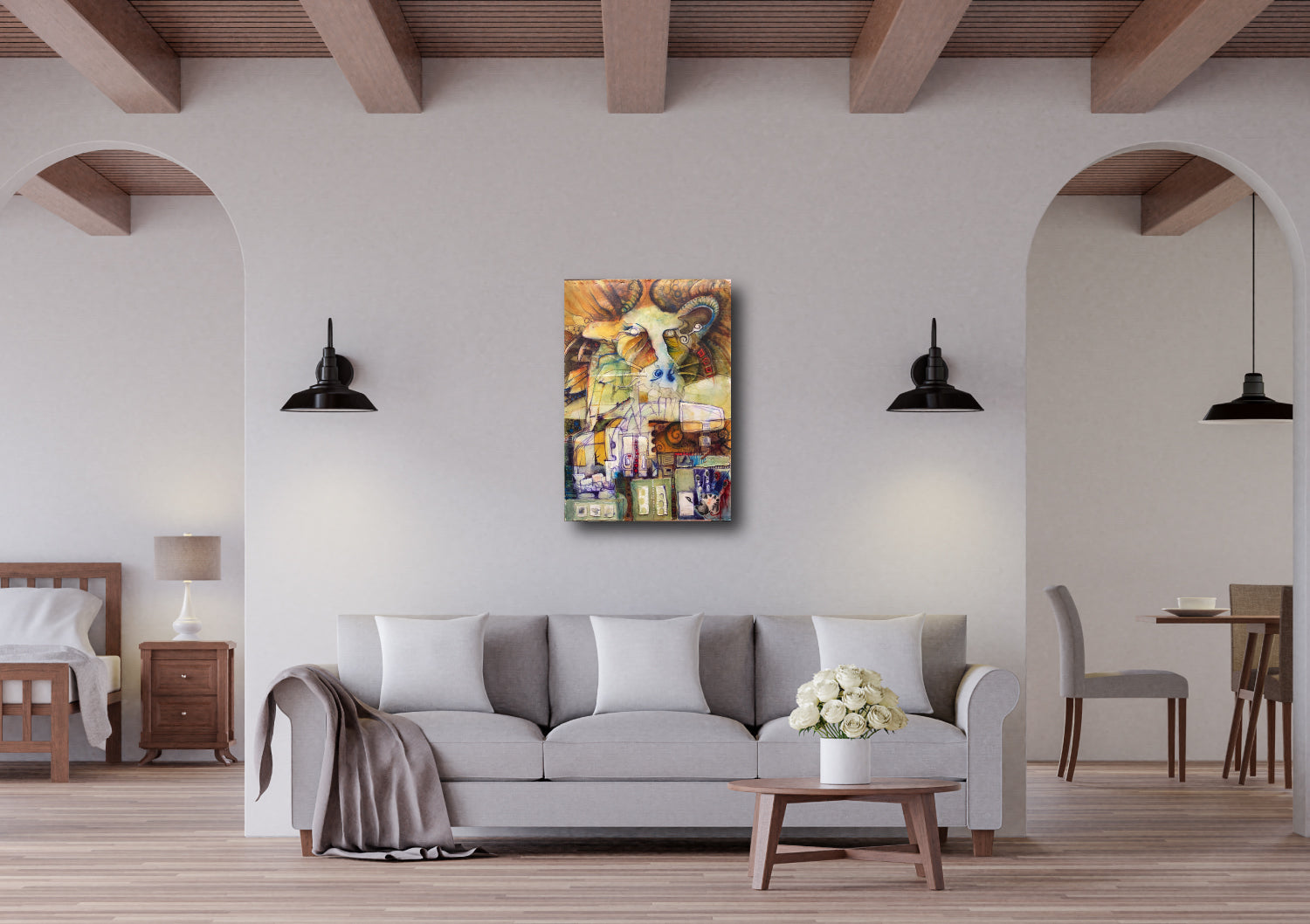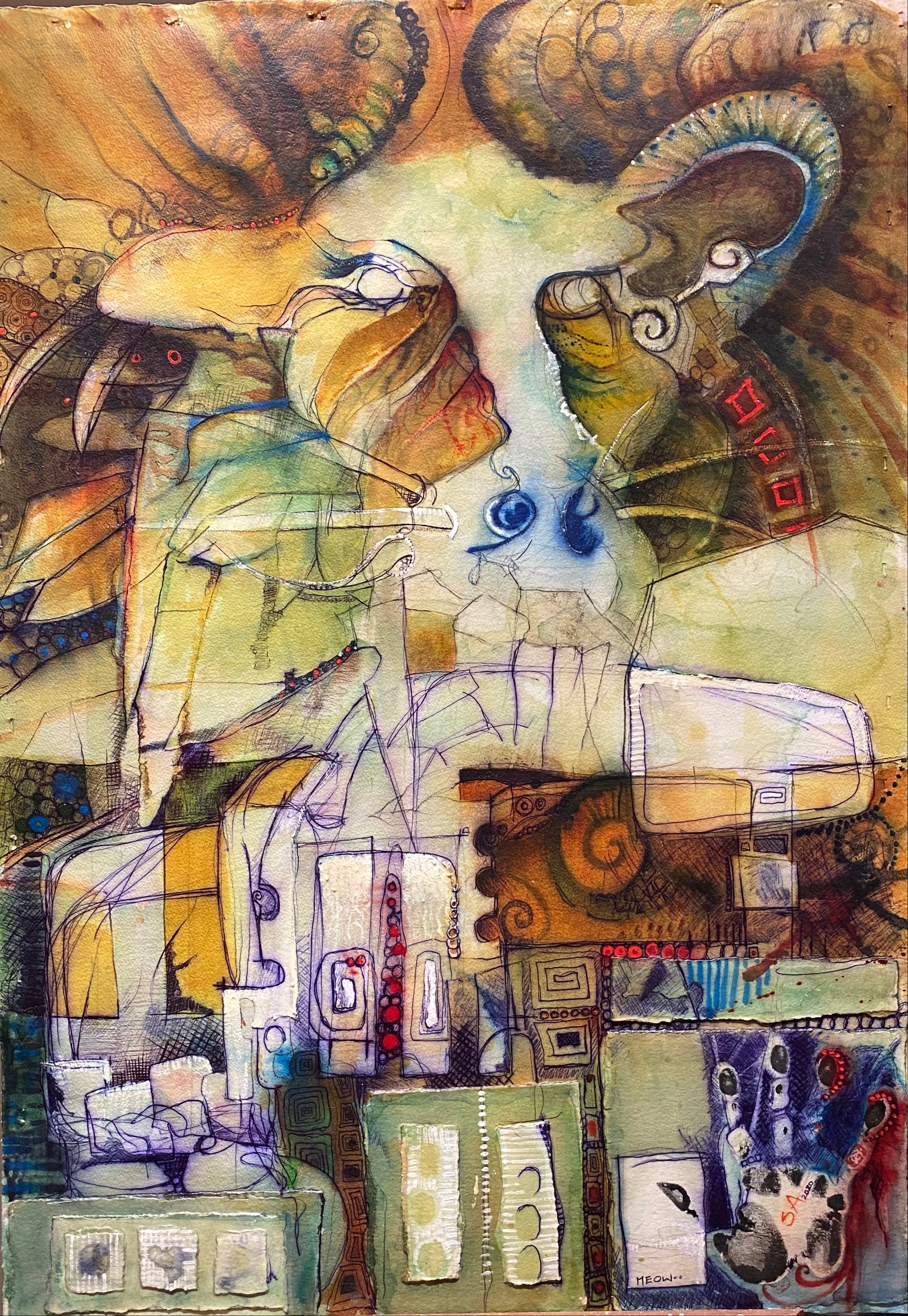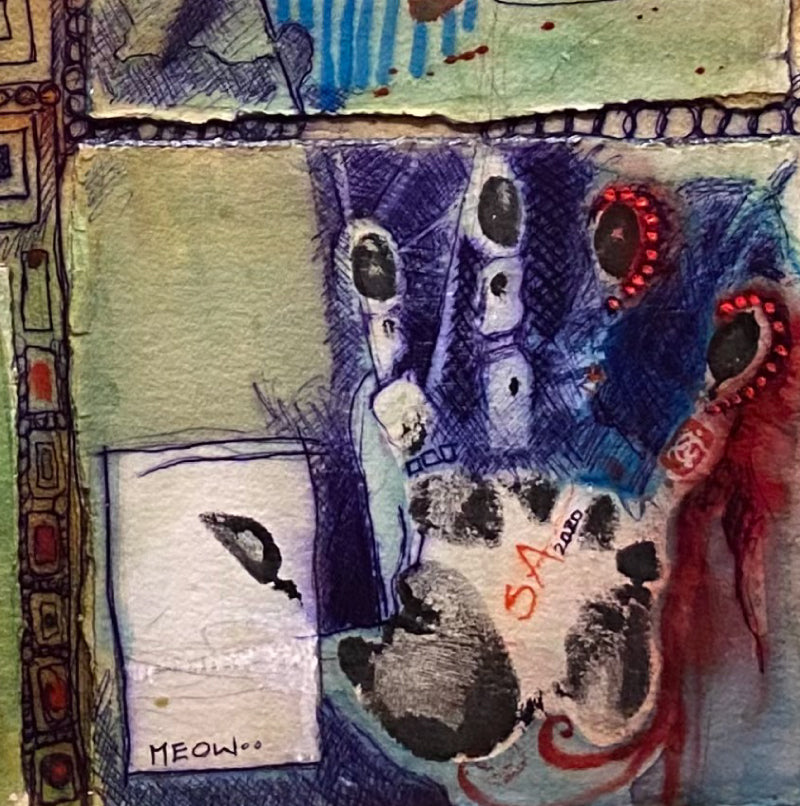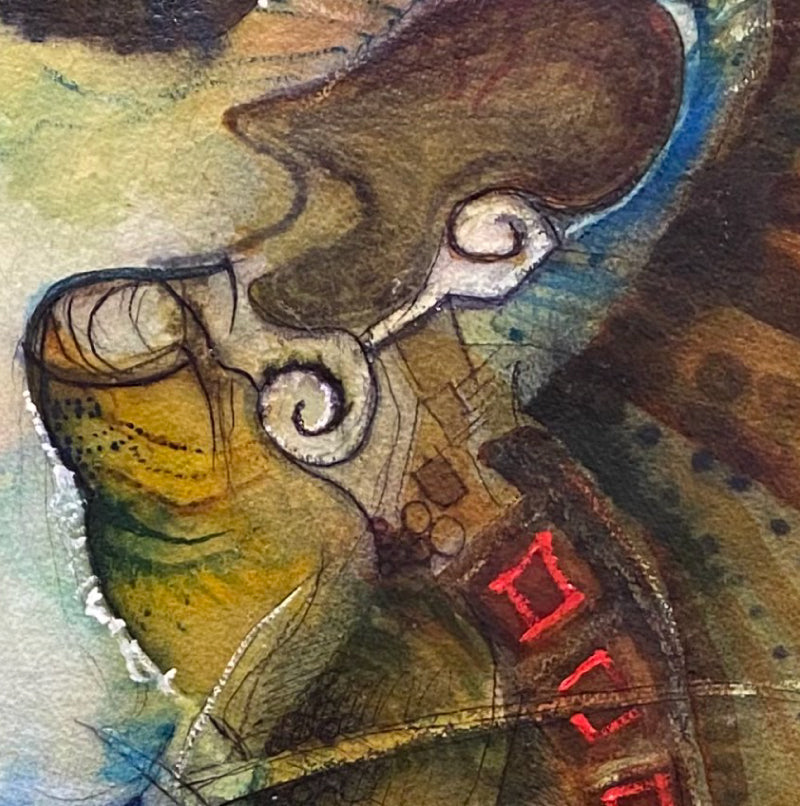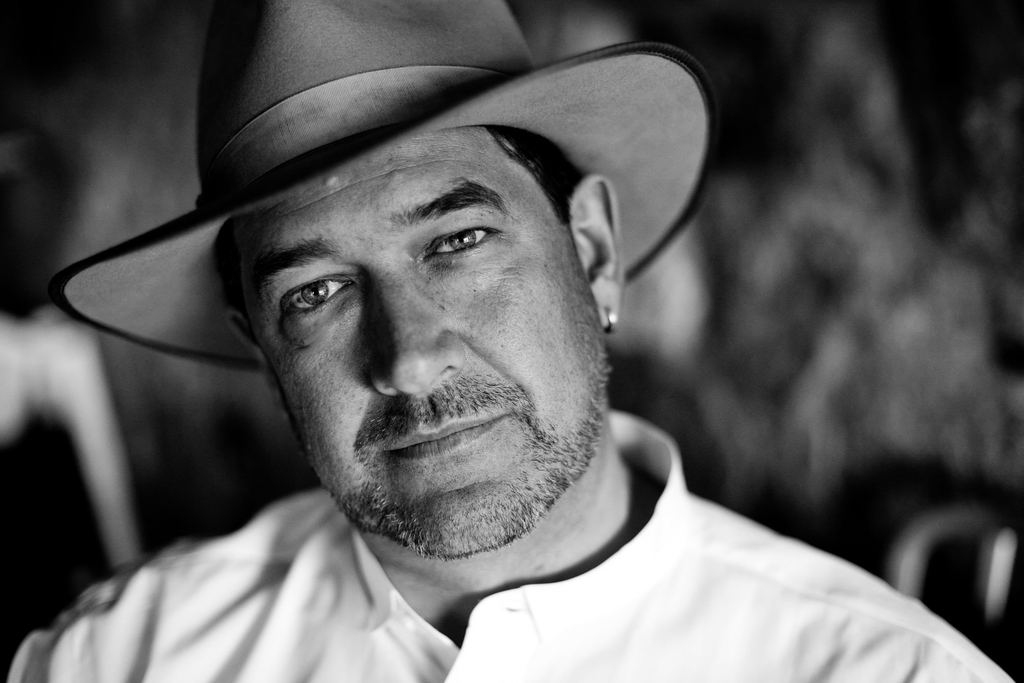
Samuel Austin
The practice of art constitutes the highest and most unique form of human expression. I like to think of my drawings and paintings as having a sense of humility and accessibility about them while being quite serious about their artistic purpose. They are watercolors, often with the inclusion of gesso, sumi ink and ball-point pen. I pay attention to details. These works are made from the highest quality pigments and paper available. My Artist Statement gives more information on why I spend so much time painting.
Beauty is reflected in honesty, humility and frugality. My painting is an effort to reveal these principles.
Through a process of creation/destruction/experimentation, back and forth I work on the paper. Gradually, I tease out the image. Nothing is predetermined. I use a very limited palette of watercolor pigment, gesso and ballpoint pen. I try to think of these materials in a very basic way. I have paper. I have pigment. And I have an emotional reaction to the subject matter. I try to work directly on the paper surface without field sketching or erasing. My goal is to preserve the freshness of the painting and reveal my beliefs about beauty by using the materials and treating the surface in these ways.
Most paintings are 20-60 layers.
Born 1962, Sam is an award winning & published Licensed Architect, loving family man, passionate environmentalist, forever rebel, an animal lover, musician and backpacker. Samuel Austin lives in Boulder, Colorado and continues to design homes and paint.
The Nitty Gritty
What am I buying? Or If I would re-phrase that: What am I buying into?
I am trying to propagate what I consider to be the beauty of imperfection. Being what we are and recognizing beauty in the evidence of survival. Scars, Wrinkles, Grey Hair, all of the beauty of the passage and build up of time. What I call the Fabric of Imperfection.
Each piece comes with a brief description: Title, Size, Primary Materials, and perhaps but not always a Short Description of inspiration. I like this brevity because I think there is room in this art for discovery. That is part of the fun. Things not initially seen and or uncovered by you.
What are these works physically? They are all painted on 300 lb watercolor paper by Arches unless noted otherwise. Canvas has been mounted to the back with PVA glue (this is a flexible archival glue used in book binding). Canvas prevents tearing, and feels beefy. The pigments used are of the highest quality.
Watercolor Pigment is either Windsor and Newton Professional grade, Sennellier or Graham. I like the latter two because honey is used in the binder, and I am a bee freak. The honey also adds to the luminosity of the work.
Ballpoint Pen is used in much of my work (almost all) I can get no meaningful answer on the archivability of this pigment. It will last longer than your life. This is all I know. I use Crystal Bic because I like it and Fisher space pen because it writes upside down and in vertical position. It also has different properties that bleed which I like. I have drawings that are 30years old that I have done which show no sign of degradation. Originally I liked it because it was free. Nowadays I continue to use it because of nostalgia and the positive message I think it conveys.
Sumi Ink. This is used on occasion. Very archival, typically produced in Japan or China this pigment is often used in tattoos. I have several using this ink.
Finish. This is perhaps the most important feature in archivability. I have worked very hard to produce Watercolors that do not require glass or frames. Much trial and error has preceded the work you hold in your hand. Of course you could frame these. And you could choose to put them behind glass. However the choice would be yours. It would not be required. Each painting is finished with three coats of acrylic medium. This is a barrier layer which fixes the watercolor pigment and is permanent. Next I apply two coats of acrylic polymer varnish with UVLS. This is a protectant against uv damage. This protection is typically provided by the glass. It can be removed without damaging the painting (this should be done by a museum professional). This is not intended to be done by you. It is really a detail that is meaningful to a museum curator. I go to all of this trouble because framing and glass are heavy, fragile and expensive. Most importantly, glass is reflective (yes even non-glare). I really enjoy gazing on the paintings aux- natural. I want to make this experience possible for you too, with out worrying that the work is at risk. So dont worry, and dont clean the paintings with anything like windex etc.
How to hang: Paintings either come with wires attached in some fashion so that they can be hung as is, or they come with grommets imbedded in the painting- so that you can screw them to the wall with normal drywall screws and a screwdriver. I love this method. It is new and novel. Both methods end up with great art on the wall with zero embellishment. An accomplishment years in the making.
If you prefer a frame, and or glass, by all means proceed without guilt of any kind. I do this work to make my patrons happy and bring joy into their lives. I have even framed a few myself.
Beyond that well…..May the force be with you.
Showings:
- Boulder Open Studios, Boulder, CO
- Chautauqua Auditorium, Boulder, CO
- Artists on Santa Fe Gallery, Denver, CO
- Brown Art Gallery, Montrose, CO
- Rembrandt Yard Gallery, Boulder, CO
- Breck Create, Breckenridge, CO
- The Ghost, Boulder Theater, Boulder, CO
Art Collectors:
- Storm Large (Pink Martini)
- Zach De Pue (Concertmaster Indianapolis Symphony Orchestra)
- Steve Hackman (Conductor Pittsburg Symphony Orchestra)
- Liza Holbrook (of Shell)
- Ronnie Barrak (Lebanese Darbuka player and composer)
- Jake Schepps (Round Window Radio)
- Ome Banjos (Primer Banjo Manufacture)
- Colorado Music Festival
- Conference on World Affairs.
- Bryan Barr (CFO Nissan Europe)
- Sandra Wong ( Musian Fiddle and Nickleharpa)
- Betsy Hand (Director of Conference on World Affairs)
- Dr. Michael Cherington (Prominent Neurologist)
- Brian Gifford owner Gifford Brown and Dee Electronics Des Moines-largest collector

